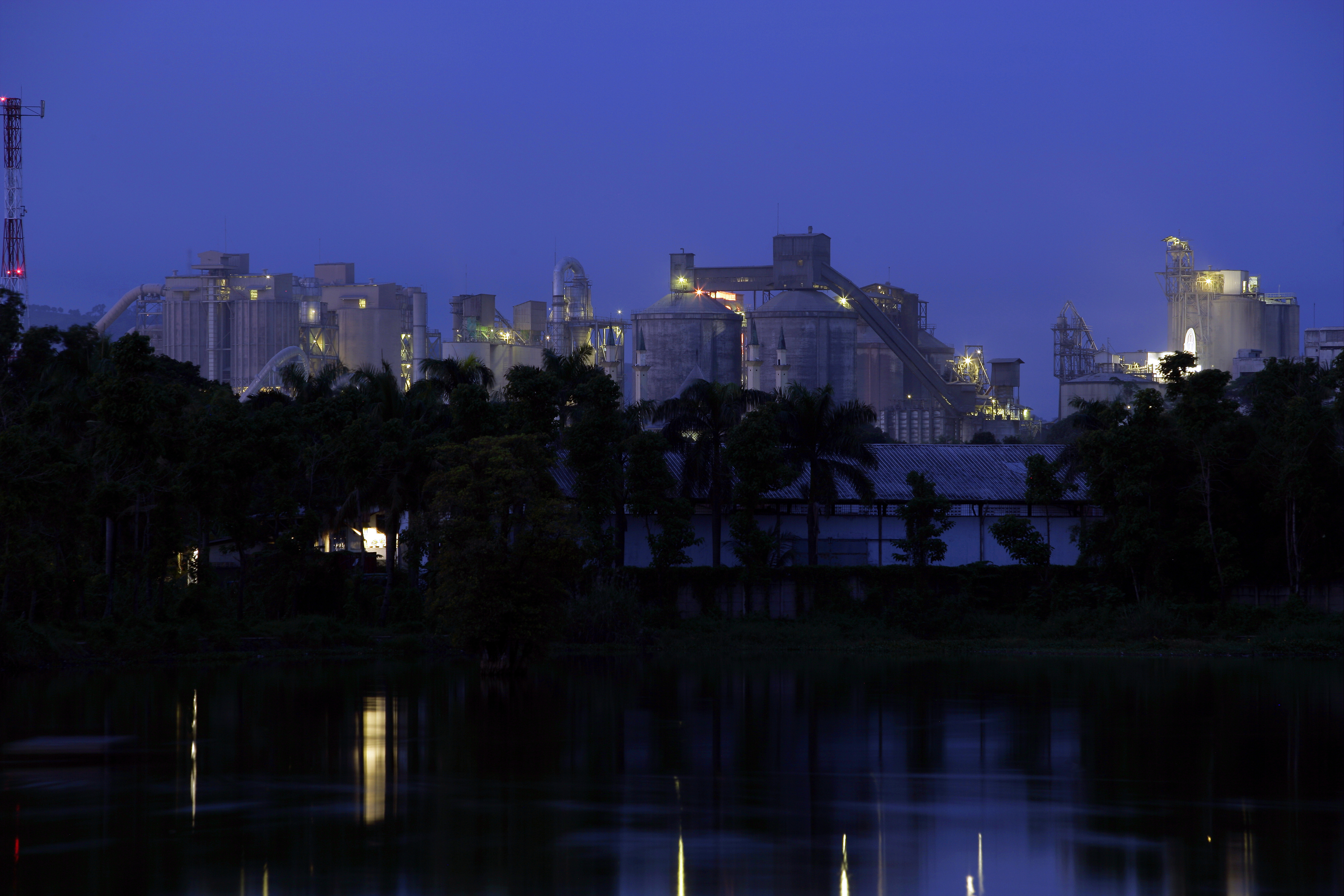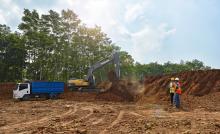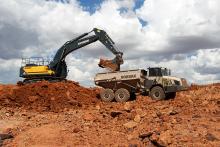
A nation of nearly 260 million people and more than 300 ethnic groups, Indonesia is said to have charted impressive economic growth since overcoming the Asian financial crisis of the late 1990s, with gross national income per capita rising steadily from US$560 in 2000 to US$3,630 in 2014.
“Today, Indonesia is the world’s fourth most populous nation, the world’s tenth largest economy in terms of purchasing power parity, and a member of the G-20. It has made enormous gains in poverty reduction, cutting the poverty rate to more than half since 1999, to 11.2% in 2015,” says The World Bank.
Indonesia’s economic planning follows a 20-year development plan, spanning from 2005 to 2025. It is segmented into five-year medium-term plans, called the RPJMN, each with different development priorities.
The current medium-term development plan, the third phase of the long-term plan, runs from 2015-2020, focusing, among others, on infrastructure development and improving social assistance programmes in education and healthcare.
“Such shifts in public spending has been enabled by a reform of long-standing energy subsidies, allowing for more investments in programmes that directly impact the poor and near-poor, as well as vast improvements in infrastructure investment. Considerable challenges remain in achieving Indonesia’s goals,” says The World Bank.
“However, a series of reform packages shows that the government wants to convince investors that Indonesia is open for business. The packages include a reduction of the Negative Investment List, a list of some 600 sectors that represent about 70% of the economy. The government has pledged further reforms.”
According to Indonesia Investments, whose website can be “regarded as the reference point for a better understanding of the Indonesian markets, economy and society,” Indonesia is increasingly mentioned as an appropriate candidate to be included in the BRIC countries (Brazil, Russia, India and China) as the country is rapidly showing signs of similar newly-advanced economic development.
“Recently, a new set of emerging economies has gained public attention. Members of this set are countries that contain promising markets with diverse economies, reasonably sophisticated financial systems and fast-growing populations,” says Indonesia Investments (www.indonesia-investments.com).
“These countries are grouped under the acronym CIVETS (Colombia, Indonesia, Vietnam, Egypt, Turkey and South Africa), and its combined gross domestic product (GDP) is predicted to account for half the global economy by 2020.
“Another important example of international recognition regarding Indonesia’s economy is the recent upgrades in the country’s credit ratings by international financial services companies such as Standard & Poor’s, Fitch Ratings and Moody’s.”
Indeed, The World Bank and the Government of Switzerland recently established a US$13.4 million fund to help Indonesia harness the growth of its cities, whose rate of growth is currently the highest in Asia.
By 2025, Indonesia is expected to have 68% of its population living in cities, and with 50 million rural residents, many of whom have families who have migrated to cities, the island of Java in particular faces high urban growth potential.
Investments in cities’ infrastructure have not kept up with the rapid rate of urbanisation, resulting in congestion, pollution, and risks to disasters such as flooding. The fund will support the building of capacity among government agencies to prepare policies that support investments in sustainable infrastructure.
The World Bank’s lending portfolio in Indonesia, up to October, 2015, consisted of 41 active with a total commitment of worth $6.7 billion, comprising engagements in community empowerment; government administration; energy, and infrastructure development.
Also in October, 2015, Caterpillar reiterated its commitment to Indonesia at the US-Indonesia Investment Summit when, with President of the Republic of Indonesia Joko Widodo in attendance, Caterpillar signed a memorandum of understanding (MOU) and made an intention to invest that “demonstrate its long-term commitment to the Indonesian market.”
The MOU between Caterpillar; Fluidic, a leading manufacturer of energy storage systems, and PT Perusahaan Listrik Negara, Indonesia’s state-owned electricity company, will see the three companies provide reliable and renewable based electricity to 500 remote villages and islands.
Caterpillar also announced its intention to invest in remanufacturing capabilities in Indonesia, a process that returns products at the end of their lives to same-as-new condition. It also helps reduce owning and operating costs by providing customers same-as-new quality at a fraction of the cost of a new part.
“The commitments we are making, in the face of difficult global economic conditions, are a vote of confidence in the potential of the Indonesian market,” says Jim Umpleby, group president with responsibility for Energy and Transportation.
Equipment manufacturers can also note that the worldwide market for construction aggregates is projected to advance to 51.7 billion tonnes in 2019, representing an annual growth rate of 5.2%.
This and other trends are presented in World Construction Aggregates, a new study from The Freedonia Group (www.freedoniagroup.com), a Cleveland, Ohio, USA-based industry research company.
Demand gains for crushed stone and alternative aggregates, such as recycled concrete, fly ash, and slag, will, be stimulated by healthy gains in all types of construction through much of the world.
However, the study also points out that sand and gravel reserves are shrinking across much of the world, and illegal sand mining plagues a number of developing markets that have rapidly growing sand consumption requirements. As efforts to curb illegal mining activities have been largely unsuccessful, sand and gravel reserves in many countries are expected to be depleted at a rapid pace through 2019.
This will result in price hikes, especially in urban centres where demand for aggregates is sizable, and will lead construction companies to turn to more favourably priced items. Alternative aggregates, in particular, are typically price-competitive with virgin aggregates since they are construction and industrial waste products that would otherwise be sent to a landfill.
Freedonia forecasts gains will be fastest in the Asia/Pacific region, with India, Indonesia, Vietnam, and Malaysia recording the most rapid increases.
Hydraulic concrete will remain the largest application for construction aggregates through 2019. Sales in concrete applications will expand at an above average pace as well, fuelled by gains in cement demand in all sectors of the construction industry.
And cement is big business in Indonesia, with cement exports surging in the first five months of 2016, a good strategy to tackle the domestic over-supply of cement in the country.
“Due to the influx of new cement producers as well as the expansion programmes of existing cement producers, the nation’s cement production capacity has nearly reached 100 million tonnes per year, while domestic demand may only reach 65 million tonnes in 2016,” says Indonesia Investments.
For example, Indocement, whose majority shareholder is the HeidelbergCement Group, is one of Indonesia’s leading producers of quality cement and specialty cement products. It currently directly owns five subsidiaries; nine subsidiaries under indirect ownership, and three associated entities involved in several businesses related to the production and sale of cement, ready-mixed concrete and aggregates.
It operates three factories, which together host 12 plants in West Java and South Kalimantan, with a total annual production capacity of 20.5 million tonnes of cement.
The company’s Citeureup factory, West Java, with an installed production capacity of 11.9 million tonnes of cement/year, is one of the largest cement factories in the world, and this will increase with a new integrated production line with a cement capacity of 4.4 million tonnes.
To support its business and distribution network, Indocement owns eight cement terminals and 39 batching plants.
It is on Java that many opportunities arise, including the US $40 billion Giant Sea Wall, a project aimed at improving flood defences and enhancing urban development in the Indonesian capital Jakarta.
Aggregates and cement suppliers are already seeking to supply material to the scheme, a joint project between Indonesia and the Netherlands that also aims to improve the prestige of Jakarta.
It is also in Java that German-based Beumer Group’s newly-created Conveying and Loading Systems (CL Systems) division has found some of its success in Indonesia.
Plant construction company Sinoma International Engineering, was awarded the contract by Indonesian end customer, Cemindo Gemilang, to supply a turnkey cement plant to Java that should reach a daily clinker production of 10,000tonnes. Sinoma commissioned Buemer with the design/supply of an overland conveyor between the limestone quarry and the plant.
The challenges in the project included the demanding topographical routing and the evergreen rainforest with the very narrow corridor requiring a complex and sophisticated design. A solution with tight horizontal curves to fit into the landscape was designed with the entire system comprising six conveying plants with a total length of 7.6km. Beumer also supplied acceleration and discharge conveyors and a PLC plant control system to the plant, which is designed for a maximum continuous conveying capacity of 3,000tonnes/hour.
The main component is a 7.4km-long overland troughed belt conveyor, and the plant conveys the material at a speed of 5m/second and negotiates a height difference of minus 188m.
“The conveying system also runs past villages and for long sections passes through rainforest that deserves to be protected,” says Dr Andreas Echelmeyer, who has headed the CL Systems division since August, 2015.
“Among other things, we have used low noise idler rollers and appropriately dimensioned protective hoods at the drive station. This means that the limestone passes through the rainforest in virtually silent mode.”










